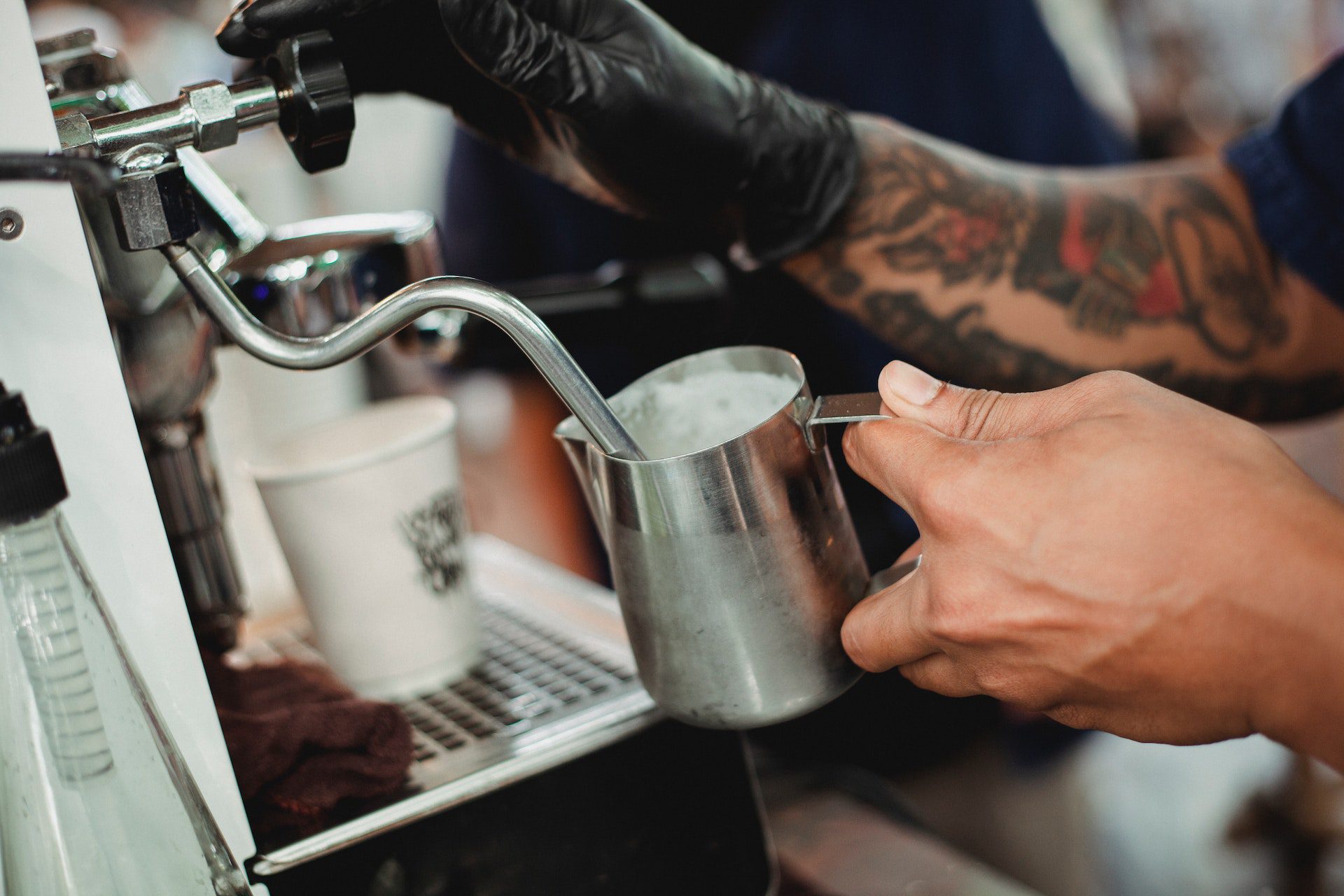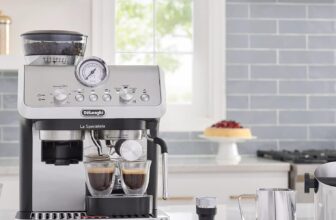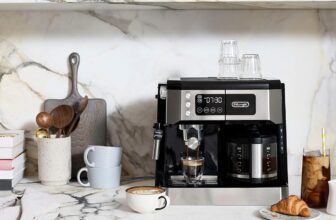
Any liquid can be steamed, according to general liquid facts, although milk’s ability to form a frothy layer depends on its protein and fat content. Because fat adds flavor and taste, whole milk is typically used in beverages in Italy. You can use any type of milk you choose as long as it’s the one you prefer. While skim milk makes foam the fastest, 1% milk alone can make basic, satisfactory outcomes with dry, dry foam. Standard medium milk for the espresso drinks provided in hotels and restaurants should be 2%, as it contains enough milk fat to improve the flavor of the beverage.
General Tips and Steps for Making the Froth

There are a few inexpensive ways to steam and froth milk, from using a French press for coffee to heating milk in a saucepan with a flexible, loose-wired whisk in your kitchen. The following equipment is recommended for common steaming or frothing techniques:
A frothing pitcher or 2-cup (about 500 ml) stainless steel container. a cooking thermometer that reads up to about 103 °C (it might be digital or needle).
Optional milk frothing equipment, such as a stovetop steamer that can steam milk and create excellent foam. A superb steaming jug or a pitcher with a pour spout on the lip of the jug is required in this case if you also want to pour latte art.
Some more tips to be a professional at frothing
Instead of using the conventionally advised vinegar mixed water, we always utilize and advise soaking the steam wand in hot, severely salted water. The simple explanation for this is because hot salt water dissolves the calcium-hardened milk deposits that frequently clog the steam wand and can also cause some mechanical issues if the milk buildup persists.
Just before Before start frothing the milk
To avoid any potential bacterial growth, ensure sure all the equipment has been well cleansed and washed before starting. Please take the time to properly study the supplied instructions and user manual before using any manufacturer’s home espresso machine. Additionally, make sure the milk and the pitcher used for frothing are both very cold. The preparation of the milk right before brewing the espresso is another crucial step that must be taken to guarantee that the finished beverage is consumed at its hottest possible temperature.
Now , How to Froth Milk Using a Steam Wand

180 ml of milk is used in our method of frothing to make two cups of cappuccino. First, pour one-third of the milk for frothing into the stainless steel frothing pitcher. Next, place a thermometer in the pitcher for cooking. Place the pitcher under the steam wand or jet while holding it by the handle. Set the steam wand’s tip so it is just below the milk’s surface. The steam valve should now be fully opened. Move the nozzle further into the liquid and reduce the steam a little if the milk surface becomes violently turbulent and large bubbles start to appear.
The milk should be aerated until it has a satiny, velvety feel. You can correct foaming by following the directions provided by the sounds you hear: It should be noted that the sound is inappropriate and inaccurate if it sounds like you are blowing bubbles through a straw. You’ll discover This foam will quickly deflate, resembling a bubble bath. The sound indicates that you don’t have enough steam pressure and that the steam wand isn’t inserted into the milk deeply enough. The sound of right-way: Correct sound is a serious, deep rumbling sound. The volume of the milk ought to be rising as well. Milk should be frothed until it has doubled in volume.
When the temperature reaches 55°C, turn off the steam. After you take the wand out of the milk, the temperature will continue to climb. 70°C is the optimum temperature to be attained. Now use a hot, clean cloth to thoroughly wipe the nozzle. Turn on the steam valve to flush and clear up any milk in the wand once your hands are secure. Never attempt to refroth milk. For effective outcomes, there is too much condensed water present. Never heat milk beyond 70°C because doing so may cause it to boil, which will make it less sweet and possibly even taste burnt.
Then you now know how to Steam and Froth Milk using a steam wand.

We will heat the milk using this steaming method, but we won’t foam it. First, pour milk into the stainless steel pitcher until it is two thirds full.
The majority of classic coffee lovers prefer to start with pitcher of ice-cold milk that has been chilled. Some people believe that using milk that is at room temperature is preferable. The outcomes are the same in both cases.
Put a thermometer for cooking inside the pitcher. Place the pitcher under the steam wand or jet while holding it by the handle. Before inserting the nozzle into the pitcher, always make sure the machine is producing plenty of steam. Then Start by placing the steam nozzle close to the pitcher’s bottom, then steam while being careful not to scald the milk. Lift the steam nozzle and keep it just submerged at the milk’s upper edge. Move the nozzle up as the foam starts to develop to match the rising height of the hot milk. When the thermometer reads 70°C, turn off the steam wand.
To release the air, lightly tap or knock the metal pitcher against the counter. What’s left will resemble whipped cream and be thick, creamy milk. Never attempt to steam milk again, as we previously advised.






